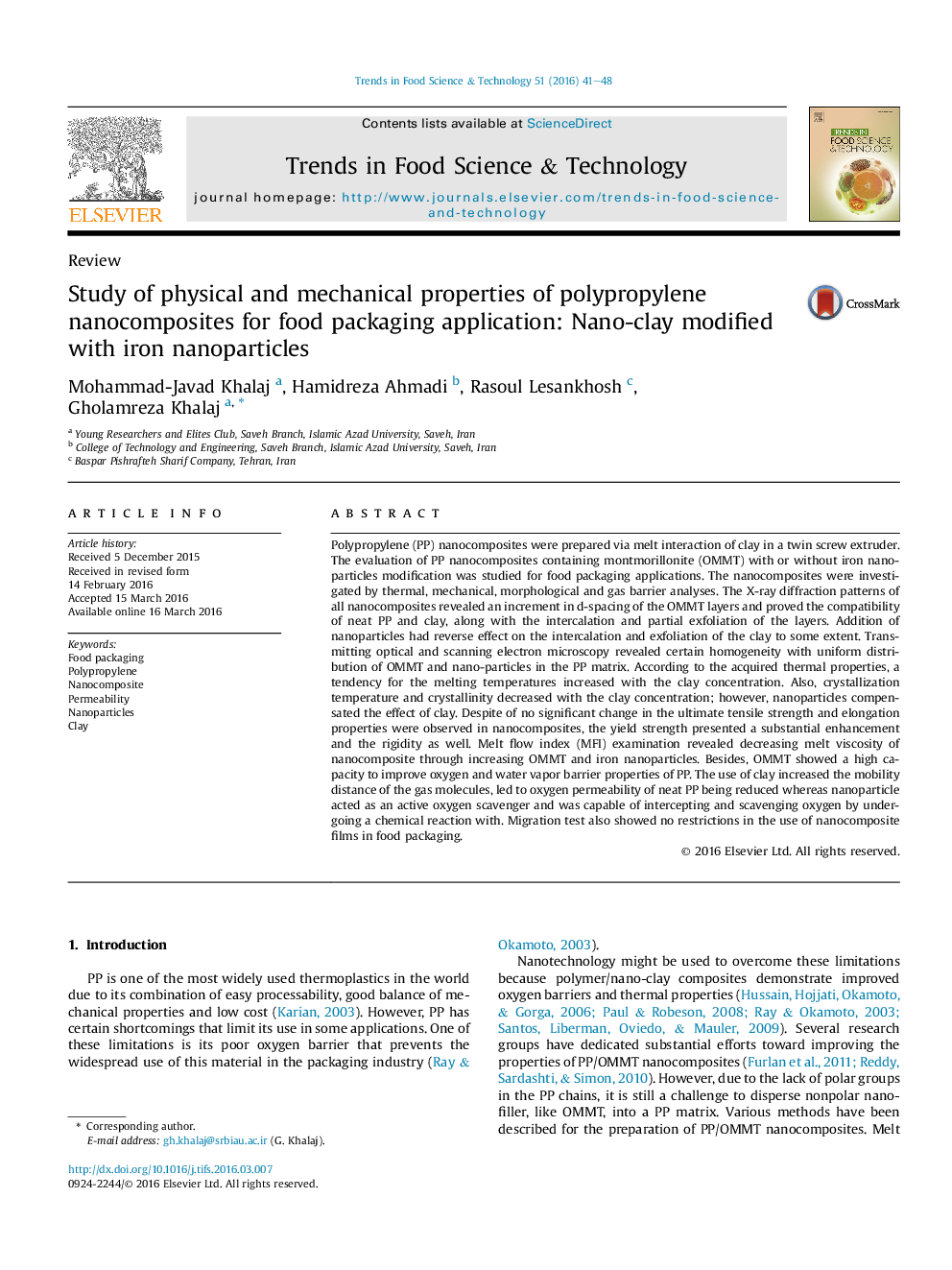| کد مقاله | کد نشریه | سال انتشار | مقاله انگلیسی | نسخه تمام متن |
|---|---|---|---|---|
| 2098522 | 1546127 | 2016 | 8 صفحه PDF | دانلود رایگان |
• Nanocomposites of PP and MMT with or without nano-iron particles, prepared by melt intercalation in a twin-screw extruder.
• Nanocomposites have shown a high capacity to improve oxygen and water vapor barrier properties of PP.
• Nano-iron acts as an active oxygen scavenger and is capable of intercepting and scavenging oxygen.
• Concluding, this study seems to clarify an efficiency of PP/MMT/nano-iron nanocomposites as food packing materials.
Polypropylene (PP) nanocomposites were prepared via melt interaction of clay in a twin screw extruder. The evaluation of PP nanocomposites containing montmorillonite (OMMT) with or without iron nanoparticles modification was studied for food packaging applications. The nanocomposites were investigated by thermal, mechanical, morphological and gas barrier analyses. The X-ray diffraction patterns of all nanocomposites revealed an increment in d-spacing of the OMMT layers and proved the compatibility of neat PP and clay, along with the intercalation and partial exfoliation of the layers. Addition of nanoparticles had reverse effect on the intercalation and exfoliation of the clay to some extent. Transmitting optical and scanning electron microscopy revealed certain homogeneity with uniform distribution of OMMT and nano-particles in the PP matrix. According to the acquired thermal properties, a tendency for the melting temperatures increased with the clay concentration. Also, crystallization temperature and crystallinity decreased with the clay concentration; however, nanoparticles compensated the effect of clay. Despite of no significant change in the ultimate tensile strength and elongation properties were observed in nanocomposites, the yield strength presented a substantial enhancement and the rigidity as well. Melt flow index (MFI) examination revealed decreasing melt viscosity of nanocomposite through increasing OMMT and iron nanoparticles. Besides, OMMT showed a high capacity to improve oxygen and water vapor barrier properties of PP. The use of clay increased the mobility distance of the gas molecules, led to oxygen permeability of neat PP being reduced whereas nanoparticle acted as an active oxygen scavenger and was capable of intercepting and scavenging oxygen by undergoing a chemical reaction with. Migration test also showed no restrictions in the use of nanocomposite films in food packaging.
Journal: Trends in Food Science & Technology - Volume 51, May 2016, Pages 41–48
